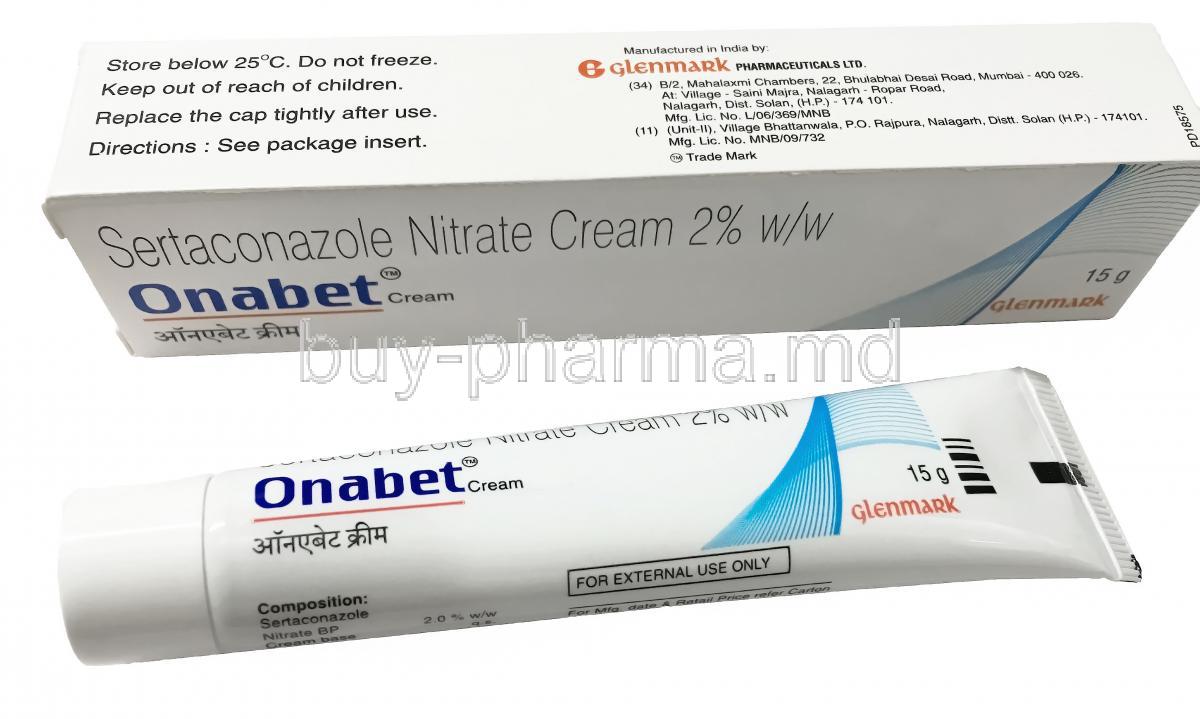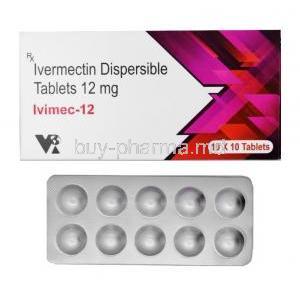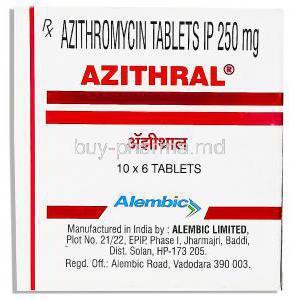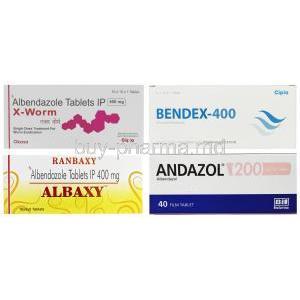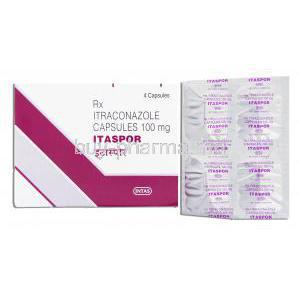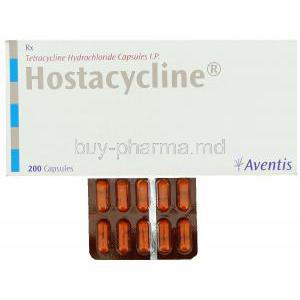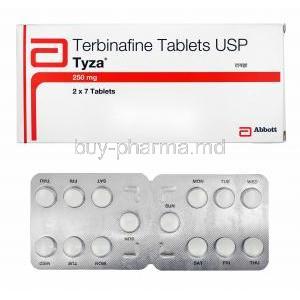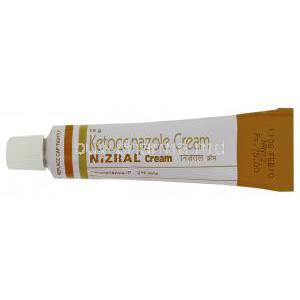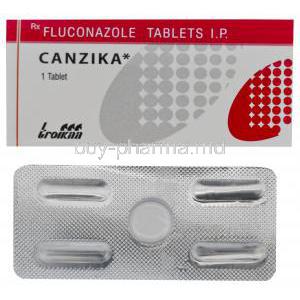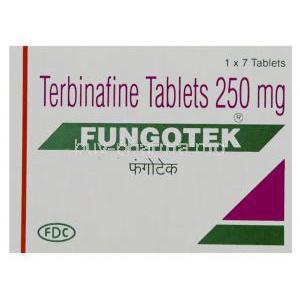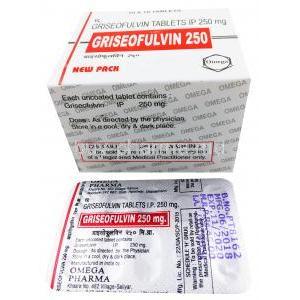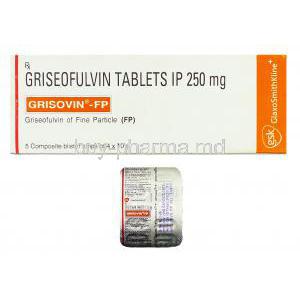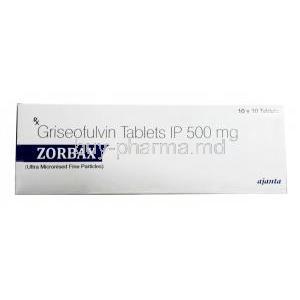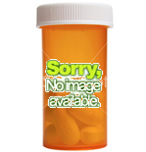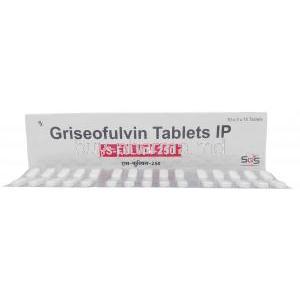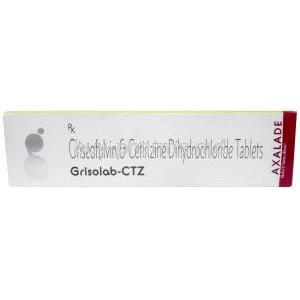Introduction to Sertaconazole Cream
Overview of sertaconazole as an antifungal medication
Sertaconazole cream is a topical antifungal formulation designed to combat a wide spectrum of superficial fungal infections. Its rapid onset of action and localized delivery make it particularly effective in reducing pruritus and irritation caused by dermatophytes and yeasts. Clinicians value its dual effect—both antifungal and anti-inflammatory—ensuring symptomatic relief while eliminating pathogenic organisms.
Therapeutic classification and chemical class (imidazole antifungal)
This medication belongs to the imidazole antifungal class, characterized by its ability to disrupt fungal cell membrane synthesis. As a therapeutic agent, sertaconazole is classified under topical antimycotics, widely prescribed in dermatology and gynecology for conditions linked to fungal overgrowth.
Global availability and brand names
Sertaconazole cream is available globally under various trade names, depending on the region. Commonly recognized brands include:
- Ertaczo
- Sertaderm
- Sertaconazole Nitrate Cream (generic formulations)
While its primary availability is within Europe, Asia, and parts of Latin America, distribution has been expanding due to rising dermatophytic infections worldwide.
Composition and Formulation
Active ingredient: sertaconazole nitrate
The principal component is sertaconazole nitrate, a potent antifungal agent with proven efficacy against dermatophytes, Candida species, and certain Malassezia strains. Its nitrate salt form enhances stability and solubility for topical use.
Available strengths and cream base
Sertaconazole cream is most frequently manufactured in a 2% concentration. The cream base ensures uniform dispersion, smooth application, and optimal penetration through the stratum corneum. This formulation promotes sustained release of the active ingredient at the site of infection.
Inactive ingredients and their role in stability and absorption
Excipients such as emulsifying agents, stabilizers, and moisturizers are incorporated to maintain product stability. These inactive components aid in:
- Enhancing dermal absorption
- Preventing microbial contamination
- Improving patient comfort by reducing greasiness and residue
Sertaconazole vs clotrimazole
Sertaconazole may be more effective and faster-acting than clotrimazole for tinea infections, demonstrating faster and more significant reductions in symptoms like scaling and erythema in some studies, likely due to its dual mechanism of action.
Ketoconazole vs sertaconazole
Ketoconazole and sertaconazole are both imidazole antifungal agents that inhibit ergosterol synthesis in fungi, but sertaconazole is often considered more effective and has a broader spectrum of activity, also treating Gram-positive bacteria.
Sertaconazole vs eberconazole
Sertaconazole appears to be generally superior to eberconazole in treating dermatophytoses, showing better efficacy in reducing symptoms like itching and scaling, although studies have also indicated eberconazole's effectiveness and a favorable safety profile in certain populations. While sertaconazole has a greater reduction in pruritus (itching) and scaling, eberconazole has shown good results in relieving these symptoms
Sertaconazole vs miconazole
Sertaconazole is a prescription antifungal shown in some studies to be more effective than miconazole for certain fungal infections, particularly for early symptom improvement and a higher rate of clinical cure in cases of cutaneous dermatophytosis (like athlete's foot).
Sertaconazole Mechanism of Action
Antifungal activity and inhibition of ergosterol synthesis
Sertaconazole impairs fungal survival by inhibiting the synthesis of ergosterol, a key sterol component of fungal cell membranes. Without ergosterol, membranes become structurally unstable and incapable of maintaining cellular integrity.
Impact on fungal cell membranes
By disrupting permeability, the drug induces leakage of intracellular components, culminating in fungal cell death. The direct fungicidal action is complemented by fungistatic properties, limiting the growth and spread of fungal colonies.
Additional anti-inflammatory and antipruritic properties
Beyond antifungal efficacy, sertaconazole demonstrates notable anti-inflammatory and antipruritic activity. Patients often experience rapid alleviation of itching and burning, which contributes to improved adherence and quality of life during therapy.
Sertaconazole Nitrate Cream Uses
Treatment of superficial dermatophytosis (tinea corporis, tinea cruris, tinea pedis)
Commonly known as ringworm, jock itch, and athlete’s foot, these infections are effectively treated with sertaconazole cream. Its broad coverage ensures eradication of dermatophyte species such as Trichophyton and Epidermophyton.
Candidiasis of the skin (cutaneous candidiasis, intertrigo)
Sertaconazole cream is highly effective in controlling yeast infections, particularly in moist, intertriginous areas. It reduces inflammation and prevents recurrence when applied consistently.
Seborrheic dermatitis
Owing to its activity against Malassezia species, sertaconazole is indicated for seborrheic dermatitis. It not only reduces scaling but also calms redness and irritation.
Vulvovaginal candidiasis (topical intravaginal formulations in some regions)
In specific regions, sertaconazole has been adapted into intravaginal formulations. This provides targeted therapy for vulvovaginal candidiasis, addressing both itching and discharge effectively.
Off-Label Uses of Sertaconazole Cream
Fungal infections resistant to other topical azoles
Occasionally prescribed when resistance to first-line topical azoles emerges, sertaconazole can be an alternative for stubborn fungal infections.
Onychomycosis adjunctive therapy
Though not a primary treatment, sertaconazole cream may be applied around the nail bed as an adjunctive option to systemic therapy for onychomycosis.
Recurrent fungal balanitis
Topical sertaconazole has been used off-label in managing recurrent balanitis caused by Candida, offering symptomatic relief and recurrence control.
Preventive use in patients prone to recurrent fungal skin infections
Some clinicians recommend intermittent application to prevent reinfection in patients with chronic susceptibility, particularly in humid climates.
Dosage and Administration
Standard adult dosage for dermatophytosis
For ringworm, athlete’s foot, or jock itch, a thin layer of cream is applied to the affected area twice daily. Treatment continues until lesions resolve, typically 2–4 weeks.
Dosage for candidiasis and seborrheic dermatitis
In candidiasis, application once or twice daily for 2–3 weeks is recommended. For seborrheic dermatitis, therapy may extend longer, depending on severity.
Duration of treatment for different indications
The treatment course varies:
- Dermatophytosis: 2–4 weeks
- Candidiasis: 2–3 weeks
- Seborrheic dermatitis: up to 4 weeks
Frequency and method of application
The cream should be applied after gently cleansing and drying the affected skin. A thin film ensures effective absorption without wastage.
Key instructions for optimal results
- Wash hands thoroughly before and after application
- Avoid covering with occlusive dressings unless advised
- Apply consistently for the full course, even if symptoms improve early
Administration in Special Populations
Elderly patients: skin sensitivity and absorption considerations
Although generally safe, elderly individuals may experience heightened cutaneous sensitivity. Regular monitoring is advised to detect irritation promptly.
Pregnant women: available safety data, pregnancy category, use only if clearly needed
Animal studies have not indicated significant teratogenic effects, but human data remain limited. Sertaconazole should be used during pregnancy only when the potential benefits outweigh the risks.
Nursing mothers: safety during lactation, avoiding application near breasts
Systemic absorption is minimal, but precaution dictates avoiding application to areas near the breasts to prevent accidental infant exposure.
Children and infants: evidence for safety and efficacy, precautions in pediatric use
Pediatric use is supported by limited studies, primarily for dermatophytosis. Extra caution should be exercised, and prolonged application avoided unless prescribed by a healthcare professional.
Warnings and Contraindications
Known hypersensitivity to sertaconazole or other imidazoles
Individuals with a history of hypersensitivity to sertaconazole, or any other imidazole derivatives, must avoid the cream. Allergic manifestations may present as erythema, urticaria, or localized edema, necessitating discontinuation and medical consultation.
Contraindication in patients with history of allergic reactions to topical antifungals
Patients who have previously developed allergic reactions to topical antifungal preparations are contraindicated for use. Even mild reactions, such as persistent pruritus or vesiculation, can herald more severe responses with re-exposure.
Avoidance on mucous membranes (unless indicated) and broken skin
The cream is not intended for ocular, oral, or nasal application. Direct use on mucous membranes should only occur if explicitly indicated. Application on broken or ulcerated skin increases absorption risk and should be strictly avoided.
Risk of misuse in non-fungal dermatoses
Improper use in conditions such as eczema, psoriasis, or bacterial dermatitis may obscure diagnosis and delay appropriate therapy. Confirmation of fungal etiology is critical prior to initiation.
Important Precautions and Careful Administration
Correct diagnosis confirmation before initiation
Accurate identification of fungal infection is vital. Misdiagnosis can lead to ineffective therapy and worsening of dermatoses.
Avoiding prolonged or unnecessary use
Topical antifungal therapy should not be extended beyond recommended durations. Prolonged or indiscriminate application increases the risk of cutaneous sensitization.
Monitoring for irritation, burning, or worsening of condition
Patients should be instructed to monitor for the following:
- Persistent erythema or exacerbation of symptoms
- Burning or stinging beyond the initial minutes post-application
- Appearance of vesicles or swelling
Precaution with concomitant topical corticosteroids
Concurrent use with corticosteroids may mask symptoms of infection, delay resolution, or increase cutaneous thinning. If combination therapy is deemed necessary, it should be carefully supervised.
Avoiding contact with eyes and mouth
Accidental exposure to ocular or oral mucosa may result in irritation. In such cases, immediate rinsing with copious water is recommended.
Potential Drug Interactions
Interaction with other topical antifungals or corticosteroids
Co-administration with other antifungals or corticosteroids may alter efficacy. Overlapping mechanisms may cause redundancy or heightened irritation.
Reduced efficacy if combined with barrier-type topical products
Occlusive ointments such as petroleum jelly or zinc oxide can hinder penetration of sertaconazole, reducing therapeutic outcomes.
Systemic drug interactions are unlikely due to minimal absorption
Since systemic absorption is negligible, clinically significant systemic interactions are improbable. Nevertheless, vigilance is advised in patients using multiple dermatologic preparations.
Side Effects of Sertaconazole Cream
Common Side Effects
The majority of patients tolerate sertaconazole well. Common adverse reactions include:
- Local irritation with burning, itching, or redness
- Mild scaling or peeling at the application site
- Transient stinging sensation immediately after application
Rare and Serious Side Effects
Uncommon yet clinically important side effects may manifest as:
- Allergic contact dermatitis with rash and vesicles
- Severe hypersensitivity, occasionally requiring medical intervention
- Aggravation of pre-existing inflammatory dermatoses
Overdosage and Emergency Management
Risk of systemic toxicity is minimal due to topical route
Given its topical application, systemic toxicity remains exceedingly rare. However, misuse may amplify local adverse effects.
Symptoms of excessive application
Excessive application may lead to:
- Severe erythema
- Persistent burning or itching
- Dermatitis with desquamation
Management: discontinuation, supportive care, symptomatic relief
In case of overuse, immediate discontinuation is advised. Symptomatic treatment with emollients or antihistamines may be warranted. Severe reactions necessitate dermatologic evaluation.
Handling and Storage Precautions
Recommended storage conditions
The cream should be stored at controlled room temperature, away from direct sunlight, heat, and moisture to preserve potency.
Shelf life and stability information
Check the packaging for the expiration date. Stability is generally maintained for several years when unopened and stored appropriately.
Proper handling
To avoid contamination:
- Do not touch the tube tip to skin or surfaces
- Recap tightly after each use
Safe disposal of unused or expired product
Expired medication should not be discarded with regular household waste. Consult local pharmaceutical disposal protocols for safe elimination.
Patient Education and Practical Guidance
How to recognize signs of improvement
Clinical improvement is indicated by reduction in erythema, scaling, and pruritus. Resolution of fissures and maceration is another positive marker.
Importance of completing full course of treatment
Premature discontinuation may allow fungal regrowth. Completing the prescribed course ensures eradication of the infection.
Avoiding shared use of medication to prevent cross-infection
The cream should be used by a single individual only. Shared use risks transmitting infection to others.
Lifestyle and hygiene measures to prevent reinfection
Preventive steps significantly reduce recurrence:
- Keep skin dry, particularly in folds and interdigital spaces
- Wear breathable footwear and change socks frequently
- Launder clothing and towels regularly in hot water
Sertaconazole Cream FAQ
- What is sertaconazole cream used for?
- Is Sertaconazole nitrate cream safe during pregnancy?
- Is Sertaconazole nitrate cream used in private parts?
- Which is better, luliconazole or sertaconazole?
- How long does it take for sertaconazole to work?
- Which is better clotrimazole or sertaconazole?
- Is sertaconazole a steroid?
- Which is better sertaconazole or miconazole?
- What is a good alternative to sertaconazole?
- How often should I apply sertaconazole?
- Is sertaconazole effective?
- Which is better, sertaconazole or ketoconazole?
- Which is better, terbinafine or sertaconazole?
- Does sertaconazole require a prescription?
- Is amorolfine cream better than sertaconazole?
- How do you apply sertaconazole cream?
- How many times a day should you use Sertaconazole nitrate cream?
- What should I avoid while using sertaconazole?
- What is the difference between butenafine and sertaconazole?
- How long do you use Sertaconazole nitrate cream?
- Are sertaconazole and clotrimazole the same?
- What age can you use Sertaconazole nitrate cream?
- Can sertaconazole treat ringworm?
- What is another name for sertaconazole?
- What is sertaconazole cream used for?
- Is Sertaconazole nitrate cream safe during pregnancy?
- Is Sertaconazole nitrate cream used in private parts?
- Which is better, luliconazole or sertaconazole?
- Is sertaconazole a steroid?
- Does sertaconazole require a prescription?
- Is amorolfine cream better than sertaconazole?
- How do you apply sertaconazole cream?
- How many times a day should you use Sertaconazole nitrate cream?
What is sertaconazole cream used for?
Sertaconazole is utilized to address infections caused by fungi. It operates by eliminating the fungus or yeast or inhibiting its growth. Sertaconazole is applied topically to your skin to treat athlete's foot (tinea pedis).
Is Sertaconazole nitrate cream safe during pregnancy?
Yes
Is Sertaconazole nitrate cream used in private parts?
No
Which is better, luliconazole or sertaconazole?
Sertaconazole
How long does it take for sertaconazole to work?
1-2 weeks
Which is better clotrimazole or sertaconazole?
Sertaconazole
Is sertaconazole a steroid?
No
Which is better sertaconazole or miconazole?
Sertaconazole outperformed miconazole in eliciting an early response among patients.
What is a good alternative to sertaconazole?
- Sertamid 2% Cream
- Sertaford 2% Cream
- Onabet 2% Cream
- Seriva Cream
How often should I apply sertaconazole?
Twice a day for 4 weeks
Is sertaconazole effective?
Yes
Which is better, sertaconazole or ketoconazole?
Sertaconazole
Which is better, terbinafine or sertaconazole?
Terbinafine hydrochloride 1% cream demonstrates higher rates of complete cure after 2 weeks when compared to sertaconazole nitrate 2% cream
Does sertaconazole require a prescription?
Yes
Is amorolfine cream better than sertaconazole?
No
How do you apply sertaconazole cream?
Apply a sufficient amount of sertaconazole to cover both the affected areas and the surrounding skin, then rub it in gently.
How many times a day should you use Sertaconazole nitrate cream?
Twice daily
What should I avoid while using sertaconazole?
Eyes, nostils, mouth, lips, vagina, and rectal area
What is the difference between butenafine and sertaconazole?
Butenafine is an antifungal from the benzylamine group that prevents the production of ergosterol by inhibiting squalene epoxidase. Sertaconazole is a more recent imidazole antifungal that disrupts ergosterol biosynthesis by blocking 14-α lanosterol demethylase.
How long do you use Sertaconazole nitrate cream?
Prescribed amount
Are sertaconazole and clotrimazole the same?
No
What age can you use Sertaconazole nitrate cream?
12 years and up
Can sertaconazole treat ringworm?
Sertaconazole cream can be utilized to address tinea corporis (ringworm)
What is another name for sertaconazole?
Ertaczo
What is sertaconazole cream used for?
Sertaconazole is used to address infections caused by fungi. It functions by eliminating the fungus or yeast or inhibiting its growth. Sertaconazole is applied topically to your skin for the treatment of athlete's foot (tinea pedis).
Is Sertaconazole nitrate cream safe during pregnancy?
Yes
Is Sertaconazole nitrate cream used in private parts?
No
Which is better, luliconazole or sertaconazole?
Sertaconazole
Is sertaconazole a steroid?
No
Does sertaconazole require a prescription?
Yes
Is amorolfine cream better than sertaconazole?
No
How do you apply sertaconazole cream?
Apply a sufficient amount of sertaconazole to fully cover the affected areas and the surrounding skin, then gently massage it in.
How many times a day should you use Sertaconazole nitrate cream?
Twice a day

